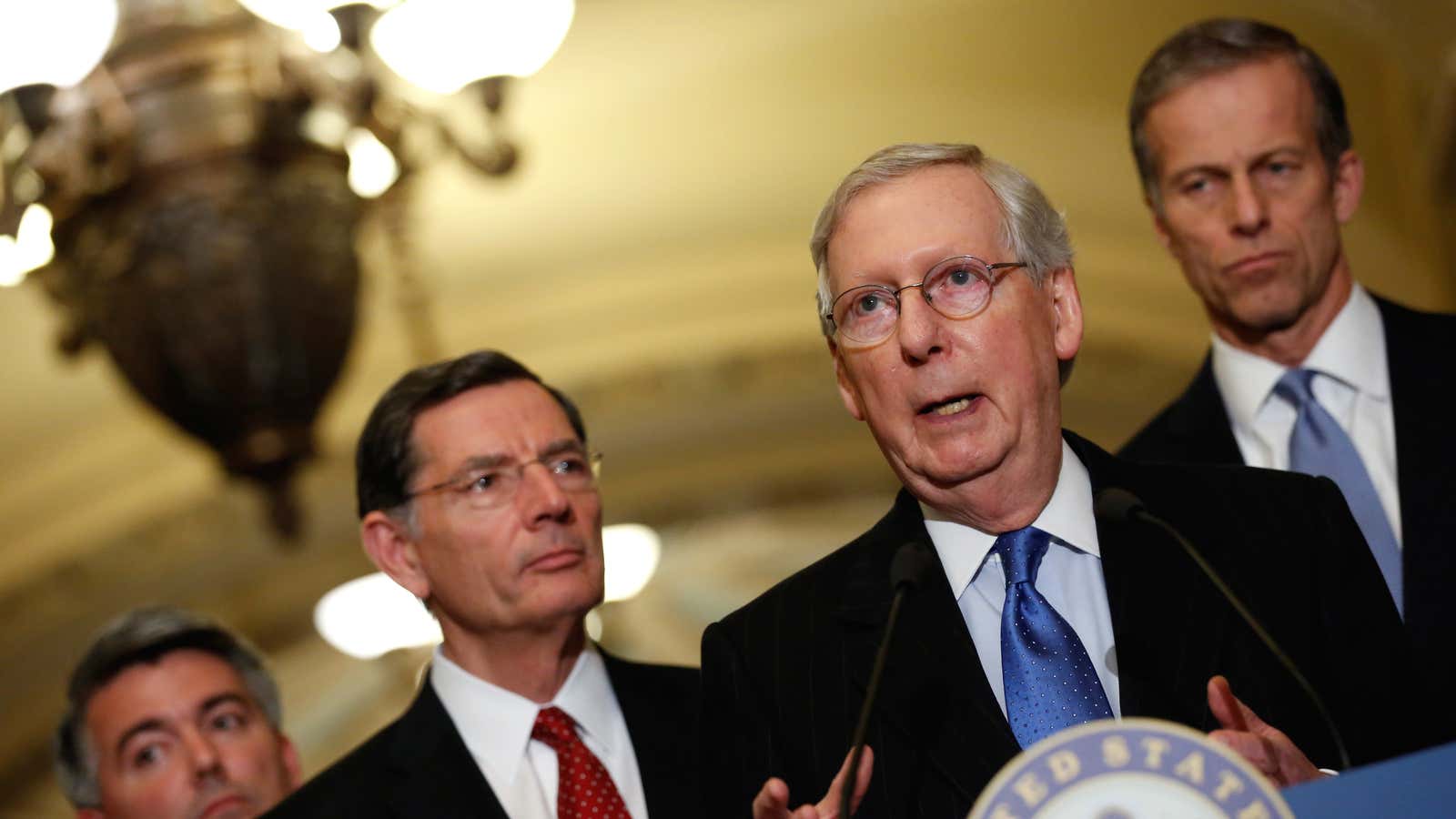On Capitol Hill, in a time of great uncertainty, two things are actually quite certain. First, judge Neil Gorsuch, president Trump’s nominee to the United States Supreme Court, will not get the necessary 60 votes in the Senate to be confirmed. And second, Senate Republicans will enact the so-called “nuclear option” to force the appointment through.
That phrase may invoke some déjà vu. In 2013, when the Senate was controlled by Democrats, then-majority leader Harry Reid of Nevada, citing “unbelievable, unprecedented obstruction” by Senate Republicans under the Obama administration, deployed the “nuclear option,” which permitted all executive-branch Cabinet appointments and judicial nominations beneath the Supreme Court to proceed with a simple majority of 51 votes. Prior to that, these appointments required a cloture vote under Senate Rule 22—three-fifths approval from the body of 100, or 60 “yea” votes.
Cloture is essentially equivalent to unanimous approval, ending debate with a final vote so that the Senate may avoid getting bogged down in every issue pending before it. Senators enact filibuster, or holding the floor indefinitely, to prevent a cloture vote from advancing. Senators once literally held the floor, à la Mr. Smith Goes to Washington, or a roller-skating Leslie Knope in Parks and Recreation.
But the “procedural filibuster,” introduced in 1975, ended the requirement for horizonless speechifying. And this exponentially increased the filibuster’s incidence. Their number doubled between 1975 and 1995, and nearly quadrupled by 2010.
But without the need for cloture, so goes the opposition’s ability to substantively object. Reid’s nuclear option effectively eliminated filibuster in these confirmation hearings—which is partly why most of president Trump’s Cabinet selections have been approved with relative ease and speed.
Consequently, in 2017, Senate Democrats are horrified by this absence of internal system of checks and balances. Perhaps they recall how useful it was in combatting presidential appointments under Republican president George W. Bush. Within days of his inauguration in 2001, then-Senate minority leader Tom Daschle vowed to use “whatever means necessary” to push back against the Bush agenda, including the filibuster.
Some say a secondary function of Rule 22, beyond advancing Senate procedure efficiently, was to maintain some semblance of bipartisanship among legislators. Requiring a three-fifths vote in confirmation proceedings necessitated that senators reach across the aisle and negotiate with members of the opposing party, as, in most terms, the split in representation is close.
And this necessarily brought the president into the equation, too. A president cognizant of Rule 22 would have to consider the bipartisan appeal of every appointee, ideally leading to executive agencies and federal courts presided over by relatively moderate individuals capable of understanding issues from perspectives beyond the vantage of their own ideologies.
Of course, Republican senators would argue, as the Democrats did before them, that today’s Senate is so rancorously divided that strict of observance of Rule 22 would render the body totally ineffectual. And they’d have a point. According to GovTrack’s ideology analysis of the US Senate, the body is sharply divided along partisan lines, with only a few go-betweens to speak of. (Looking at you, senators Susan Collins of Maine and Joe Manchin of West Virginia.)
This division doesn’t entirely fall to the Democrats’ fateful decision in 2013, though. An analysis of GovTrack’s ideology report cards for US senators shows that the average “ideology score” of Republican senators between 2013 and 2016 (indicating how often they vote along party lines) runs upwards of 77%, while the average Democratic score falls around 20%. Translation: Republican senators vote with their party far more often than Democrats have over the past few years. Much of that may be a function of being a Republican legislator under a Democratic president—and if that’s the case, we’re likely to see Senate Democrats become more partisan, rather than less.
